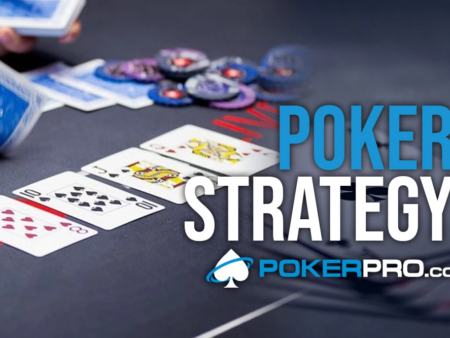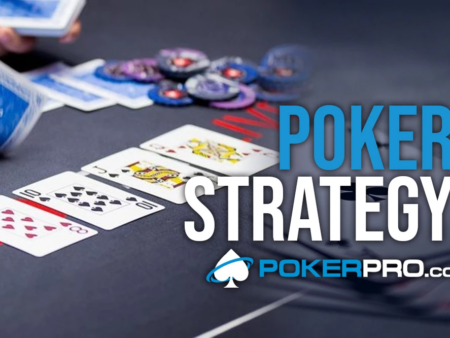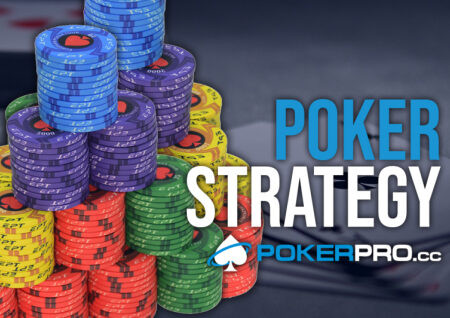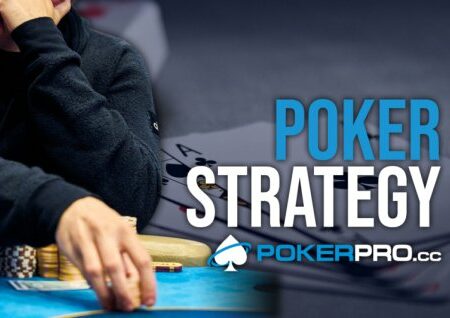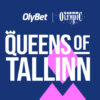Today we’ll be looking at the last scenario where we might see an all in preflop confrontation while taking into account ICM applications that arise…
3-bet Shove ICM Situation
Today we’ll be looking at the last scenario where we might see an all in preflop confrontation while taking into account ICM applications that arise when we found ourselves on the final table.
We already covered pushing all in and calling shoves, after that we looked at open raising and calling after our opponent reshoves over our open – in short raise calling. The last thing we need to consider is what hands are we going to reshove when we face an open from our opponent – 3-bet shoving.
3-bet shoving range
There are two factors that we need to consider when constructing our 3-bet shoving range. How wide our opponent is openraising and which of those hands he is going to call our shove with.
From there we can figure out how much fold equity we have and what our equity when called is and when we combine those two things, we arrive at our 3-bet shoving range.
Today’s example:
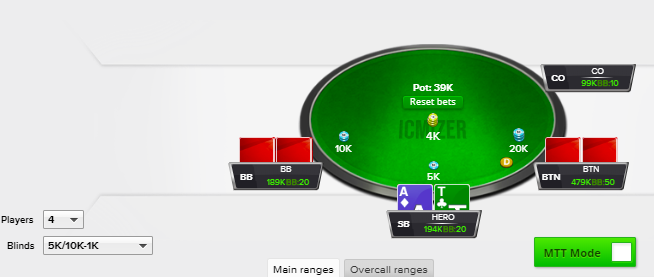
Having a good reshoving range is important since it’s the only good response we have in this situation. Calling is bad because most of the time we’ll find ourselves in a 3-way pot out of position. The BTN we’ll still be able to apply a lot of pressure on us postflop and because of that our equity realization will be very poor, even worse then it would be without ICM pressure.
The situation we find ourselves in is similar to the other articles where we were studying ICM implications since it’s the most difficult to play and the ICM tax is the biggest.
We have a shortstack with 10bb, a bigstack with 50bb and we are equal middle stack with 20bb. The shortstack folded on the CO and now we find ourselves facing a minraise from the BTN who is the chipleader.
Nash BTN bigstack
First we’ll have a look at ranges when we face a player with optimal play. Images posted below are BTN’s opening range, our reshoving range and BTN’s calling range.
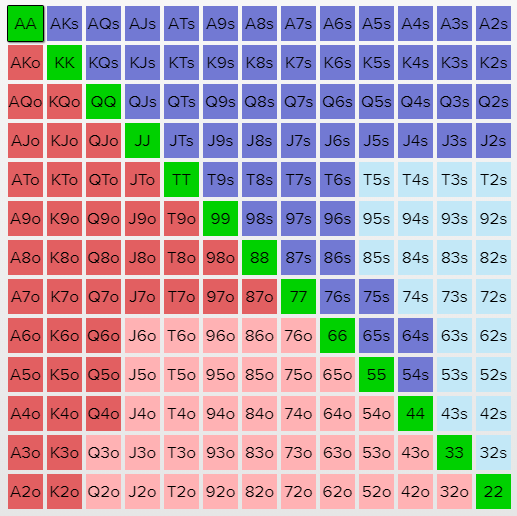
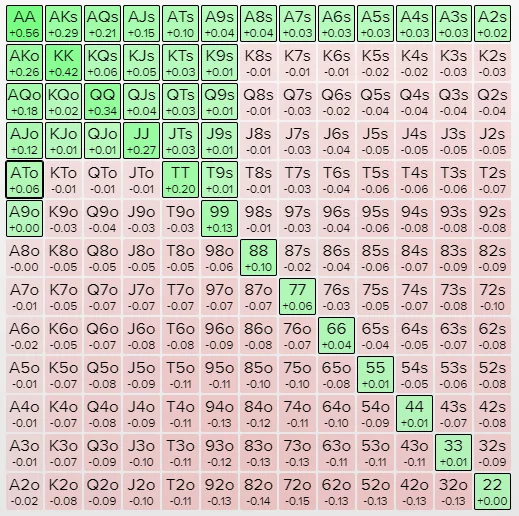
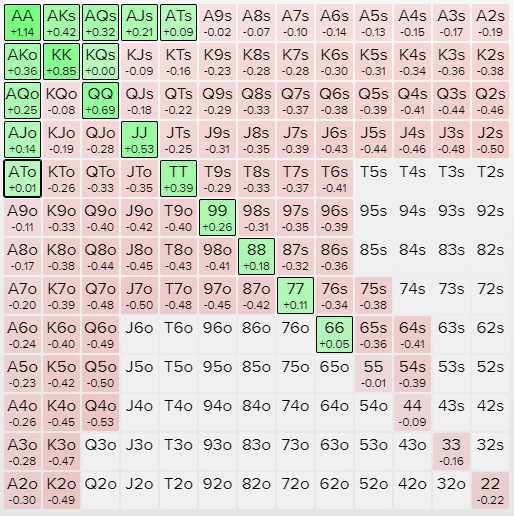
As expected the BTN gets to open very wide in this spot since he has a lot of fold equity vs us and the other mid stack in the BB – around 60% of his hands. Assuming the BTN is a good player and he’ll be playing a nash strategy we can rejam 19% of our hands and he can only call us with 66+ AT+.
If we compare those ranges to when there is no ICM in play we can see we get to be much wider – our 3-bet shove jumps from 19% to 31% even though our opponent calls our shove wider.
3-bet shove and BTN’s Raise Call below.
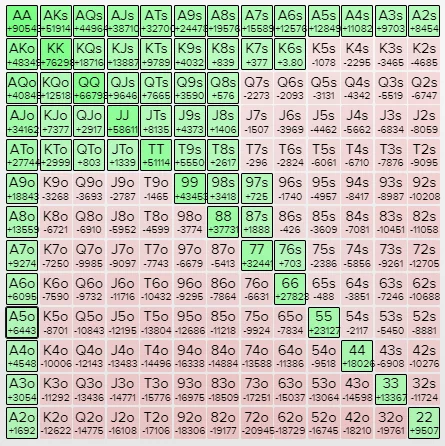
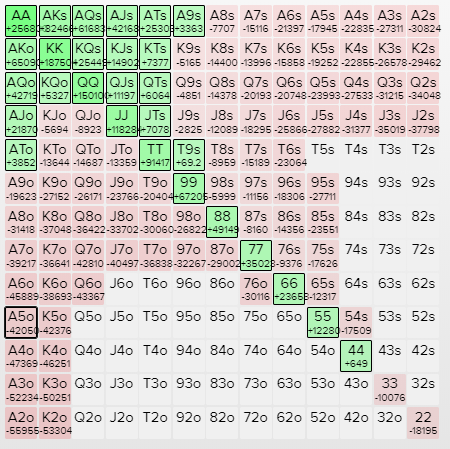
Of course the BTN shouldn’t be opening this wide without the ICM pressure but you can keep this ranges in mind, if you’re facing an aggressive opponent in early to mid stages of a tournament with those stack depths which will definitely happen.
BTN raise calls wider
We should however be careful using nash ranges facing opponents that we might have reasons to believe do not know the correct nash strategy. Those types of players normally call all ins to wide and as we can see above that changes our range quite drastically.
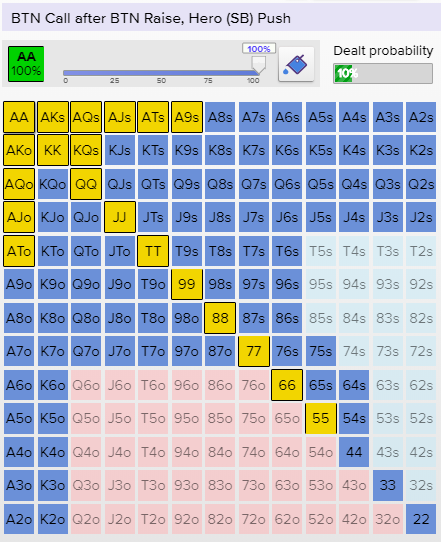
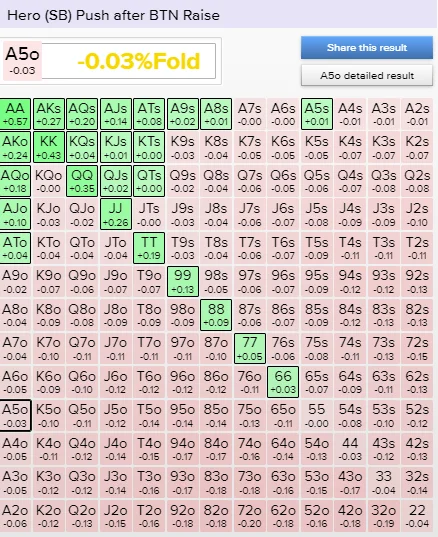
We only added 55, A9s, KQs to the BTNs calling range of our rejam and the percentage of hands we can profitably shove fall from 19% to 11% so make sure to keep an eye on previous all in confrontations so you can have a feel for which range to use versus different opponents.
BTN is the other middle stack
Now let’s see how the situation changes when we are facing the open from the equal
shortstack who is now on the BTN while the bigstack is siting behind us on the BB.
Nash BTN midstack
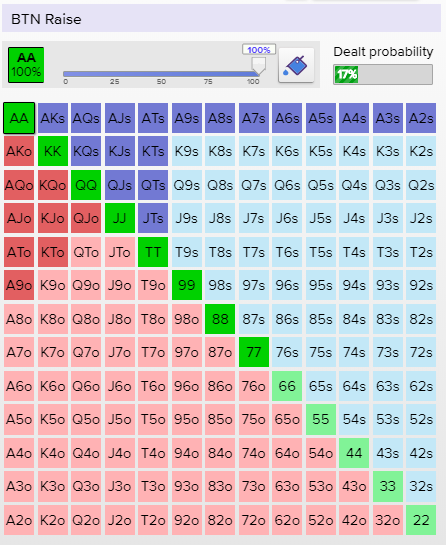
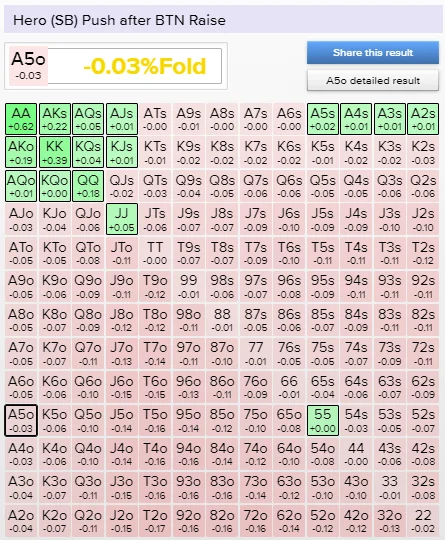
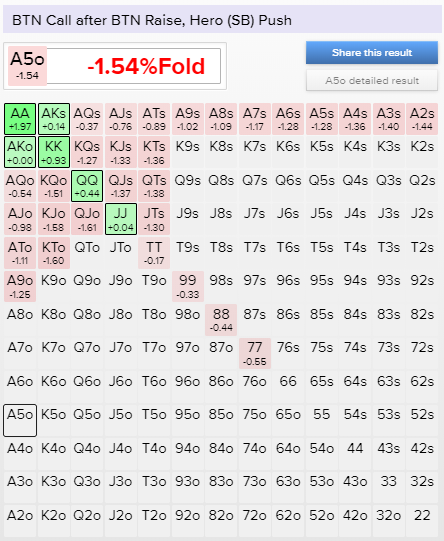
This changes thing a lot. Since the BTN can now expect the BB who is the bigstack to attack him a lot with reshoves he needs to adjust and open much tighter then the bigstack could in the previous example – as we can see above around 17%. This changes our response as well and also have to be much tighter where we can now only shove 8,6%.
Different minraising strategy
Because the BTN in this situation is an extremely uncomfortable situation it’s not uncommon to see that they open shove most of their hands and minraise only some of their strongest hands that they plan to raise call and some hands as bluffs to balance those hands out. There are different options when constructing such a range but lets take a look at one example.
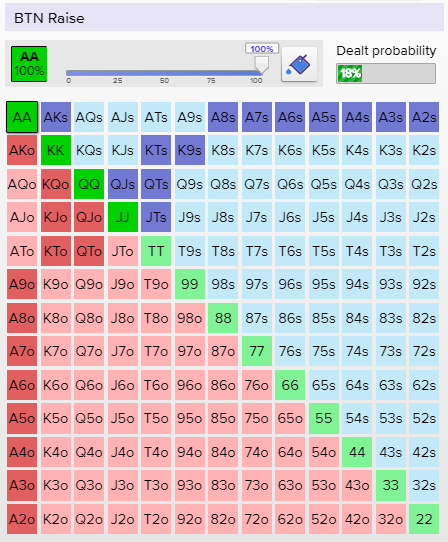
Hands that the BTN can profitably raise call vs us and the player in the BB are JJ+ AK+ so those are the hands that we put in his ‘’value range’’. To balance those hands out we take the best hands he can’t profitably open jam but still have good playibilty or card removal. In our case those would be A2s-A8s, A2o-A9o,KTs-K9s, QJs-QTs, JTs. And the hands in the middle such as AJs or AQo and 77+ are the ones we want to open shove since they are to weak to raise call but too strong to raise fold.
When facing such a polar range we adjust and rejam a different range as well which would look something like that.
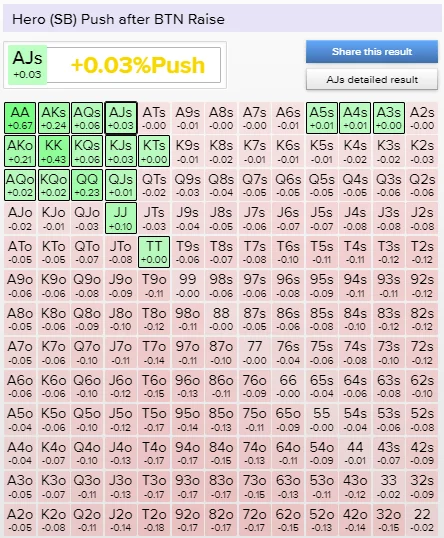
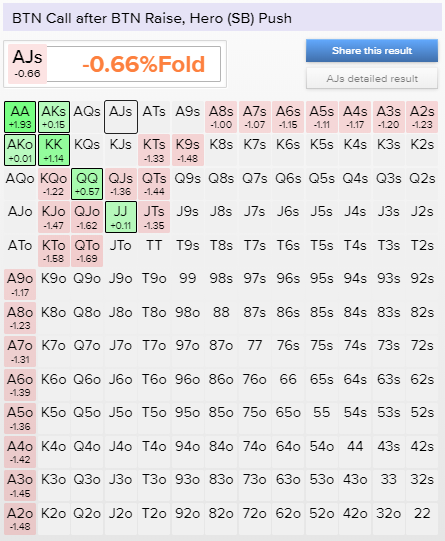
Conclusion
As you can see there is a lot of factors to consider in these kind of spots even though it may appear simple at first glance.
ICMizer or Holdem Resources Calculator are going to be your best friends when studying these spots and you should definitely spend some time on then since they can affect your winrate in a big way.
If there are any hands in these kind of spots you want to have reviewed, you can post them on our social media or contact us and we’ll pick some of them to look at.
